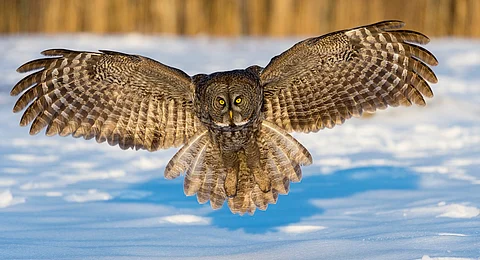

Noise pollution is not just a nuisance. It can cause hearing loss and can worsen health conditions such as cardiovascular disease and type 2 diabetes. But now, researchers have found an unlikely inspiration to ‘drown out’ noise: owls.
A team of researchers have developed a special kind of aerogel that is light and soft and mimics owl feathers, which along with the birds’ porous skin remains ‘whisper-quiet’ during flight.
The aerogel is made up of two layers. The bottom layer that is porous, resembles the bird’s skin with microscopic cavities that cancel out low-frequency noise. The top layer, inspired by feathers, is made of nanofibres and dampens high-frequency sounds.
The aerogel, according to the researchers, absorbs 58 per cent of sound waves that strike it. It also reduces 87.5 decibels of automobile engine noise to a safe level of 78.6 decibels, which is a better reduction than existing high-end noise absorbers.
Finally, it maintains structural integrity through 100 compression cycles, with only five per cent deformation, according to the portal Phys.org.
The team made the aerogel by freezing droplets of hexane, a colourless volatile liquid, into a layer. The freezing process left behind a sponge-like, honeycomb structure when removed.
The researchers then added another layer with tiny silicon fibres, creating a material that mimics both the softness and structure of an owl’s feathers and skin.
The aerogel could be used in cars and manufacturing facilities to reduce traffic and industrial noise, according to the team.
When tested against a car engine, this two-layer material worked even better than traditional soundproofing fibres, proving that nature still holds the blueprint for some of our most modern problems.
Owl-Inspired Coupled Structure Nanofiber-Based Aerogels for Broadband Noise Reduction has been published in the journal ACS Applied Materials & Interfaces. The authors are Yaning Sun, Dingding Zong, Yanzhe Li, Shuying Pang and Yong Liu.